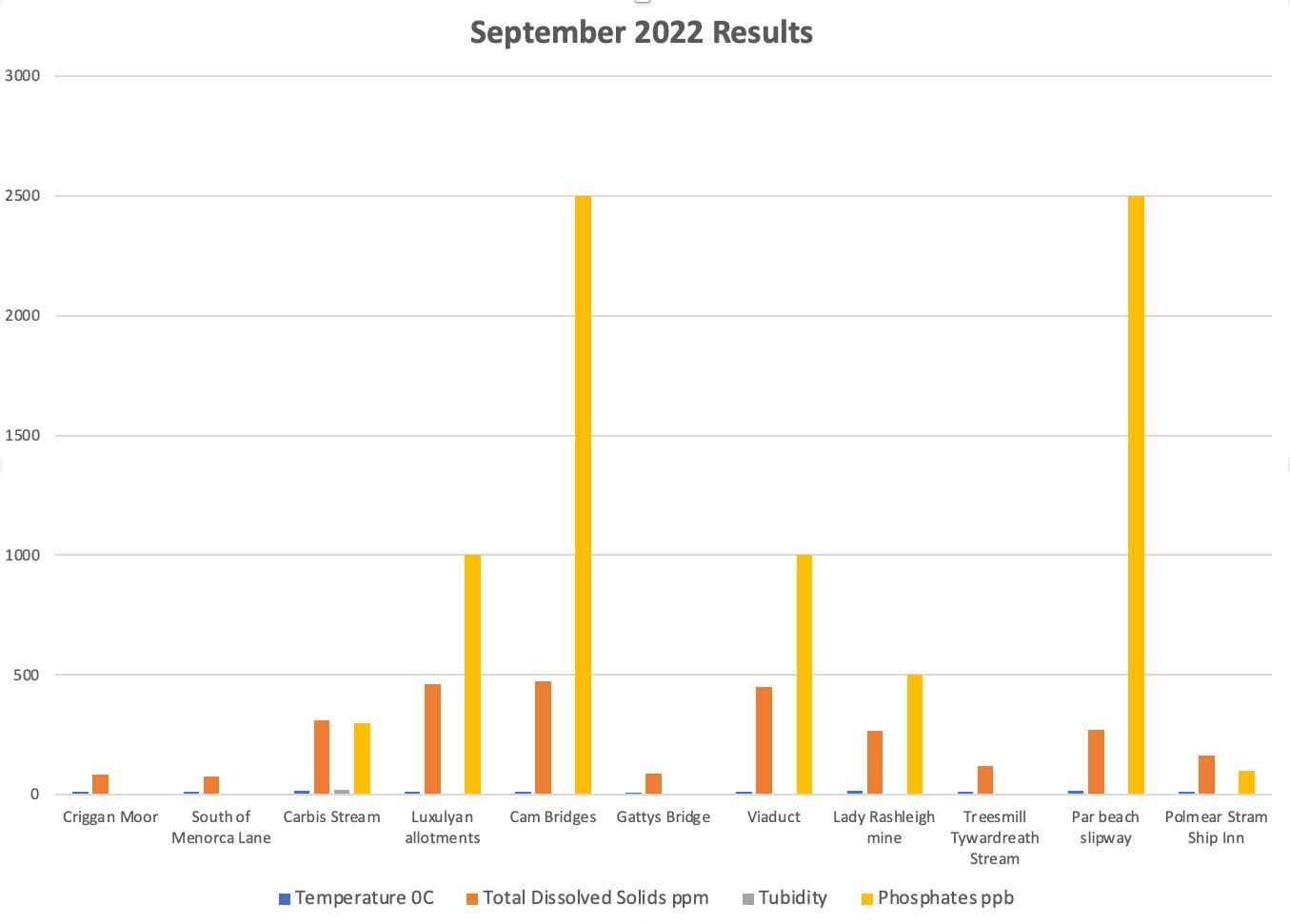September Results
KEY POINTS
1. The Friends of Par Beach (FoPB) have started CSI testing on the Polmear stream near the Ship Inn.
2. River levels were low but higher than in the previous few months.
4. Phosphate levels at the maximum reading of 2500 ppb at Cam Bridges and Par Beach slipway, high on the Carbis stream and too high downstream from Luxulyan allotments (WRT classifications)
5. High bacteria levels continue to be a concern but the source(s) is unknown. 6. Evidence was found for the presence of otters and fish.

DISCUSSION
1. Positive observations.
(a) Simon Tagney has started river monitoring at the Polmear Stream near Par beach.
(b) Otter spraint was found at a new site, south of the disused Prideaux Wood china clay works.
(c) A tiny fish was glimpsed in the stream on Criggan Moors.
2. Points of concern.
(a) Joan Farmer’s analysis of bacteria samples taken from 3 sites shows that, with the exception of the E.coli result for the river near Minorca Lane, levels of both types of bacteria (E.coli and Total Coliform) were Very High Risk/Unsafe (E.coli) and Very Unsafe (Total Coliforms) according to the USA Health Risk Category for Recreational Water.
(b) Phosphate levels, again, were Too High (WRT classification) at sites from Luxulyan allotments downstream to the sea and at two sites (Cam Bridges and Par Beach Slipway) were at the maximum level that our tests can identify. The level was High on the Carbis Stream.
(c) After several months of clear water, the Carbis Stream was tinged white, probably with china clay and at the confluence with the Par the contrast in water colour was evident once again, although not as stark as it is for most months of the year.
(d) Total Dissolved Solids exceeded what would be expected in a river of this type at 3 locations on the main river (Luxulyan allotments, Cam Bridges and Treffry Viaduct) and, just, on the Carbis stream.
3. Areas of doubt
(a) It was once expected that bacteria levels would be elevated on the Lower Par, especially from the vicinity of St Austell North STW, although that has not been proved to be a source. What is surprising is that this is the case at Criggan Moors, near the source of the river. A further surprise is that at the middle of the three sites that were sampled, Minorca Lane, there was a dip in E.coli levels. The source(s) of high bacteria is unknown.
(b) Our judgements on bacteria levels relate to the US Health Risk Category for Recreational Water but we have no idea if there are equivalent standards in the UK.
(c) We do have some uncertainty about the devices measuring temperature and Total Dissolved Solids, which will require further investigation
Report kindly written and supplied by Roger Smith

